

JAPANESE KITE COLLECTION. This page was generated with permission of Mr.Masaaki Satoh, the author of the book "Nagoya Koryu dako".
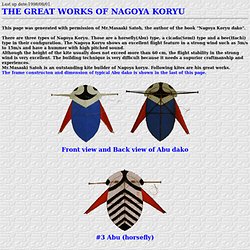
There are three types of Nagoya Koryu. Those are a horsefly(Abu) type, a cicada(Semi) type and a bee(Hachi) type in their configuration. The Nagoya Koryu shows an excellent flight feature in a strong wind such as 5m/s to 15m/s and have a hummer with high pitched sound. Although the height of the kite usually does not exceed more than 60 cm, the flight stability in the strong wind is very excellent.
The building technique is very difficult because it needs a supurior craftmanship and experiences. Front view and Back view of Abu dako #3 Abu (horsefly) #4 Choshi (long wing) #5 Inkyo (retirement) #6 Abu (horsefly) #7 Semi (cicada) #8 Semi (cicada) #9 Semi (cicada) #10 Hachi (bee) #11 Okame (plain women) #12 Sanbanso #13 Ozuko (large head) #14 Fukusuke #15 Abu Beka #16 Semi Beka #17 Abu Beka #18 Abu Beka #19 Abu Deko.
A Modern Centipede. By Bernhard Malle Picture of the completed kite Fig. 1: Overview of the Centipede Building a centipede has long been on my wish list of new projects.
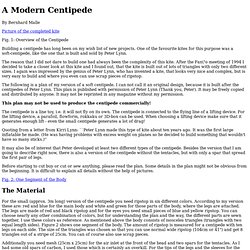
One of the favourite kites for this purpose was a soft-centipede, like the one that is built and sold by Peter Lynn. The reason that I did not dare to build one had always been the complexity of this kite. The following is a plan of my version of a soft centipede. This plan may not be used to produce the centipede commercially! The centipede is a line toy, i.e. it will not fly on its own. Quoting from a letter from Kirri Lynn: ``Peter Lynn made this type of kite about ten years ago.
It may also be of interest that Peter developed at least two different types of the centipede. Before starting to cut buy or cut or sew anything, please read the plan. Fig. 2: One Segment of the Body. Chinese Traditional Kite Craft. Flat kites are built in many forms and types, very often with pictorial motives from ancient myths and religious ideas, or very often with a picture of the ying-yang sign or the "Eight Diagrams" (a kind of ancient philosophy-related Chinese diagram). 2.
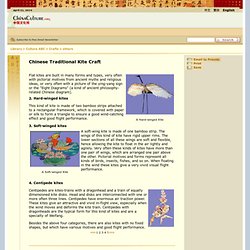
Hard-winged kites This kind of kite is made of two bamboo strips attached to a rectangular framework, which is covered with paper or silk to form a triangle to ensure a good wind-catching effect and good flight performance. Chen Zhaoji's Mechanical Kites. Chinese Kite Designs. Chinese kite designs are more than just fabulous flyers, they are also works of art that tell stories about fighting dragons, butterflies and caterpillars.
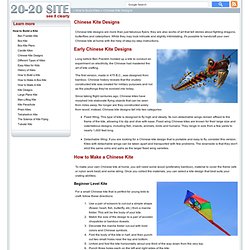
While they may look intricate and slightly intimidating, it's possible to handcraft your own Chinese kite at home with the help of step-by-step instructions. Early Chinese Kite Designs Long before Ben Franklin hoisted up a kite to conduct an experiment on electricity, the Chinese had mastered the art of kite crafting. The first version, made in 475 B.C., was designed from bamboo.
Chinese history reveals that the crudely constructed kite was created for military purposes and not as the playthings they've evolved into today. Since taking flight centuries ago, Chinese kites have morphed into elaborate flying objects that can be seen from miles away. Fixed Wing: This type of kite is designed to fly high and steady.
Butterfly and Centipede Kites. Chinese butterfly kites are some of the most popular kites in the world.
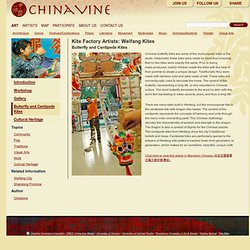
Historically these kites were made by hand thus ensuring that no two kites were exactly the same. Prior to being mass-produced, mainly children made the kites with the help of their parents to create a unique design. Traditionally they were made with bamboo rods and sails made of silk. These kites are conventionally used to decorate the home.
The symbol of the butterfly, representing a long life, is very important in Chinese culture. There are many kites built in Weifang, but the most popular kite is the centipede kite with dragon-like heads. Click here to view this article in Mandarin Chinese (点击这里查看这篇文章的普通话). Kites. Delicate Chinese traditional kites. Will of the Wind - Chimes. Chinatown Kite Shop.